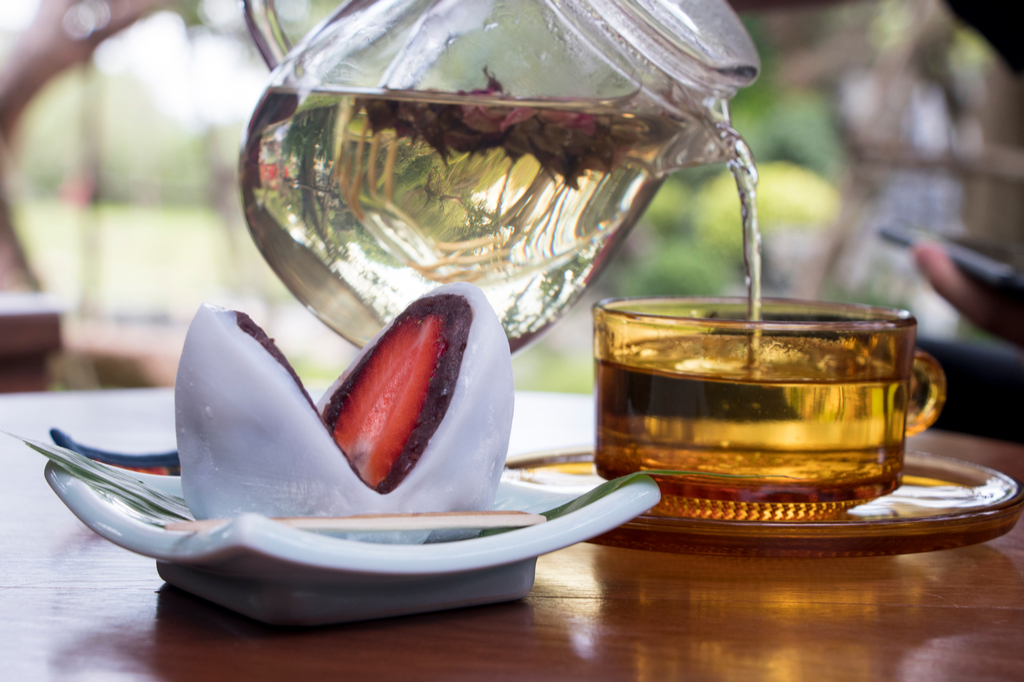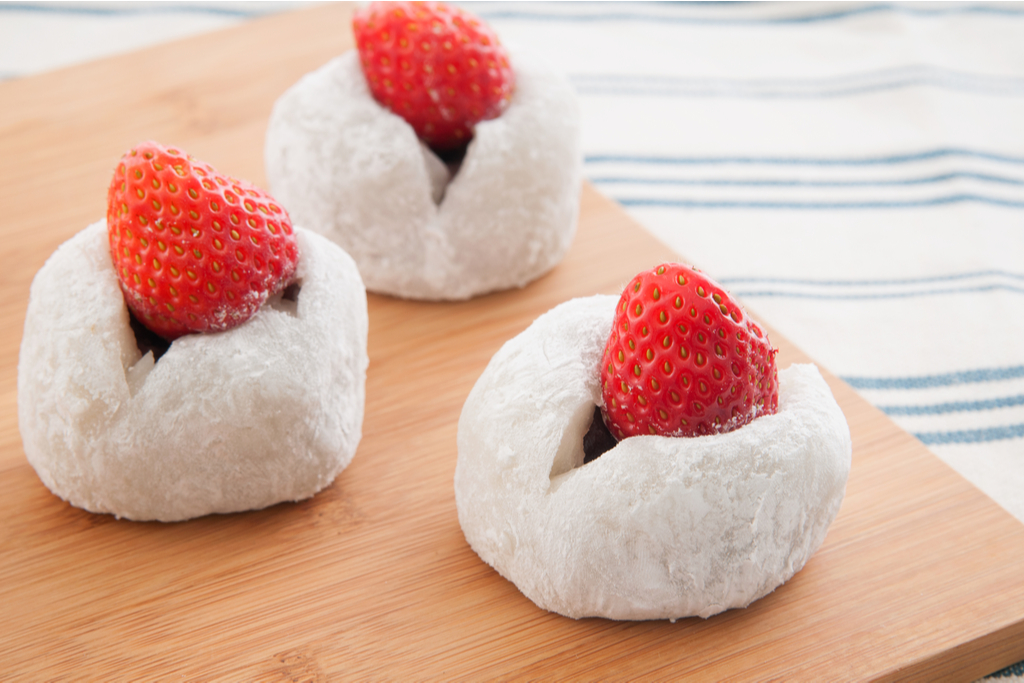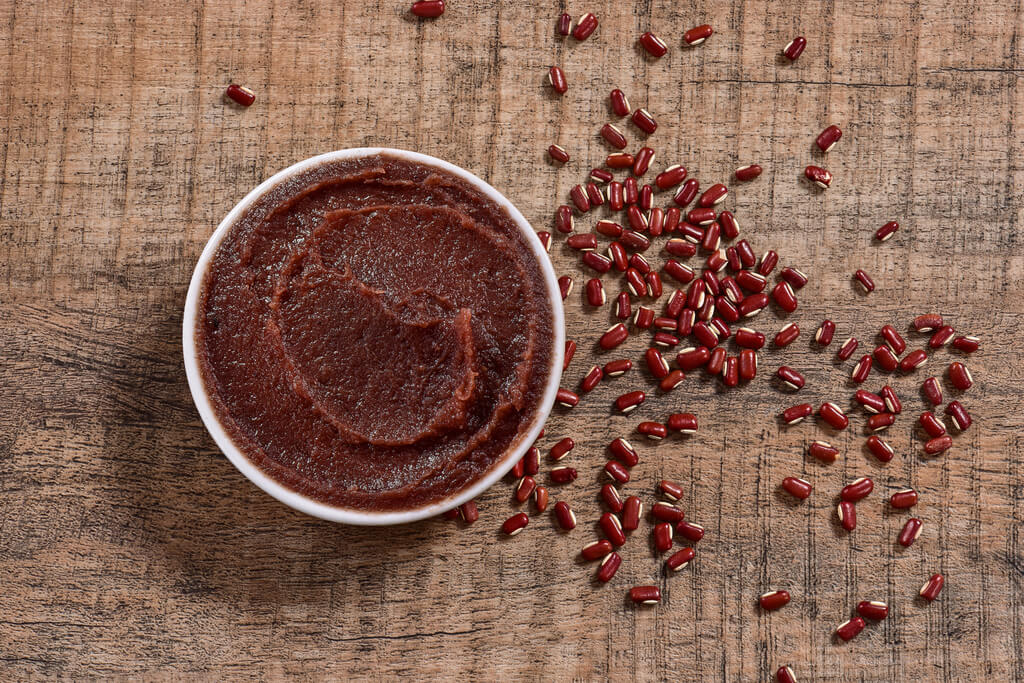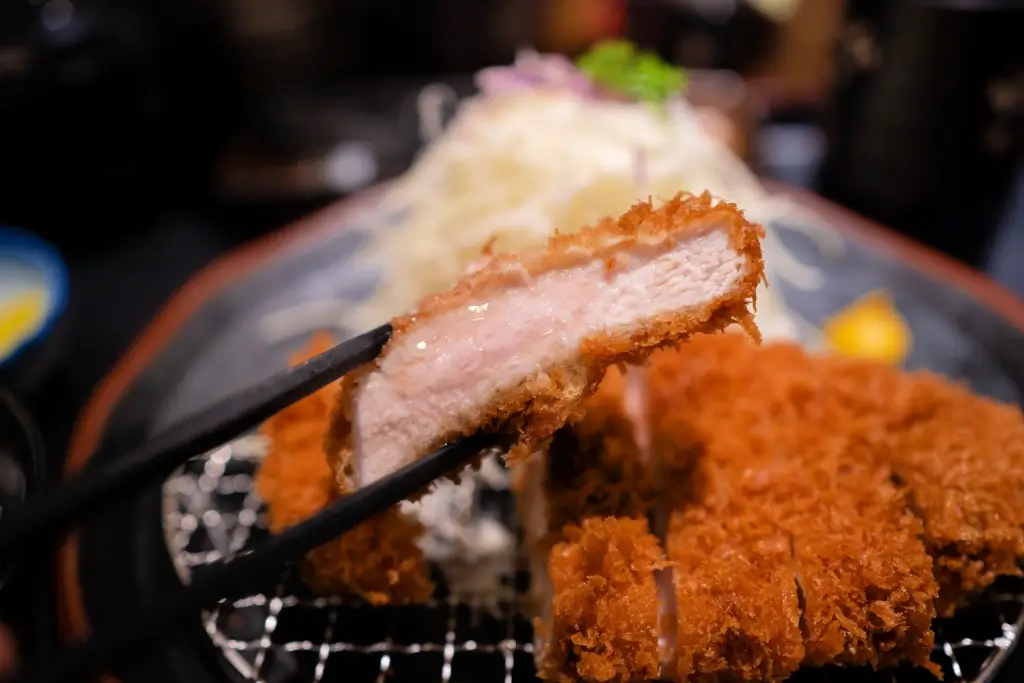How to Make Strawberry Daifuku at Home
Tanner Schroeder
Posted on June 09, 2021
Share:

Strawberry daifuku, also called strawberry mochi, or ichigo daifuku, are a traditional Japanese delicacy with tangy strawberries. The slight acidity of Japanese strawberries is a perfect match for the sticky-sweet mochi and anko.
Basic Ingredients:
- 6 Strawberries.
- 180g of anko (sweet red bean paste), either store-bought or homemade. See the recipe below to make your own!
- 200g of pre-made mochi (sticky rice flour dough), or 6 pre-made mochi squares. You can also make your own.
- Corn starch or potato starch (katakuriko in Japanese) for dusting.
How to Make Strawberry Daifuku:
- Wash, dry, and cut the stems off the strawberries.
- Make six even balls out of the anko.
- Wrap the strawberries in the anko, leaving only the tips showing.
- Sift the corn or potato starch onto a tray, and place mochi on top. Divide the mochi into six equal parts. When working with mochi, cover all the surfaces (and your hands) with a dusting of starch, so the dough doesn’t stick.
- Gently flatten and stretch each piece of mochi into a 3 inch (7.6 cm) square or circle.
- Wrap the mochi around the anko-strawberry balls, bringing all edges of the dough around and twisting them closed at the top. Then roll the completed daifuku in the starch until it makes a perfect sphere.
Now all that’s left is to bite into the chewy and juicy strawberry mochi treat you have created! Even better, enjoy your daifuku served with green tea or matcha. If you want to get fancy and learn how to make matcha with a whisk, check out our article to learn more.

No Mochi or Anko? No Problem!
If you can’t find pre-made mochi or red bean paste, it’s easy to make both of them yourself following the recipes below.
How to Make Mochi
- Mix the rice flour and sugar inside a microwave-safe bowl.
- Slowly add the water, mixing continuously to form a smooth paste.
- Once there are no more lumps in the mixture, cover with microwave-safe plastic wrap and microwave for 1min at 1200W
- Remove from the microwave and stir. Place it again into the microwave for 1min at 1200W.
- Remove and stir, then microwave a final time for around 30s at 1200W.
- The dough should now be thick and pliable enough to work with.
Now you can place the daifuku mochi dough onto a starch-covered work surface to begin making your ichigo daifuku.
Craving discovery this summer? Sakuraco is delivering traditional Japanese wagashi, like strawberry daifuku, right to your door every month. Click here to learn more!
Ingredients
- 100g rice flour, also called mochiko or shiratamako.
- 20g sugar.
- 150ml water.
There are two types of red bean paste, tsubuan and koshian. Tsubuan has a chunky texture, with pieces of the whole beans still inside. Koshian is a very smooth paste, with none of the beans left visible.
This recipe is for tsubuan, as it is easier to make than koshian and perfect for daifuku. The recipe makes about 600g of tsubuan paste.

How to Make Red Bean Paste (Anko)
- Wash the azuki beans.
- Place the beans and about 1L of water (the water level should be several cm or 1-2 inches above the level of the beans) into a pot. Bring to a boil over medium-high heat. Boil for 5 minutes, then drain the water.
- Add another 1L of water (the water level should be several cm or 1-2 inches above the level of the beans), bring to a boil over medium-high heat, then reduce to a simmer at medium-low heat.
- Simmer for about 1 to 1 ½ hours, adding water so that the water level is always above the beans. Once the beans are soft enough to easily crush between your fingers, take them off the heat and drain the water again.
- In the same pot, add half the sugar to the now drained beans, and heat over medium-low.
- Once the sugar has dissolved, add the other half, and the salt. Continue heating, while stirring constantly to evaporate the leftover water, making a thick paste.
- Continue to evaporate the water until you can draw a clean line on the bottom of the pot with a spoon. Then take off the heat.
- Transfer the completed anko to a baking sheet to cool completely. The paste will further thicken as it cools.
Ingredients
- 200g azuki beans.
- Water.
- 200g sugar.
- ½ tsp salt.

Once cooled, your anko will be ready for you to make some delectable daifuku, as well as many other traditional Japanese desserts, like dorayaki (pancakes filled with anko), manju (steamed dumplings filled with anko), or taiyaki (fish-shaped, anko-filled treats).
Daifuku can also be filled with more than just anko and strawberries. Some other tasty filling ideas are chocolate ganache, matcha ganache, and shiroan (white bean paste). Instead of strawberries, you can use any kind of seasonal fruit. Some popular kinds of daifuku fruits are whole grapes, whole mandarin oranges, and kiwis.
Many stores here in Japan will alternate the types of daifuku they sell based on what’s in season, following the Japanese concept of shun. For example, chestnut and persimmon daifuku are usually only sold in the fall, while strawberry daifuku is only sold in the spring and summer.

Discover authentic flavors with Sakuraco
Get Sakuraco 

Discover authentic flavors with Sakuraco
Get Sakuraco 
Related Articles

Tonkatsu Luxury Restaurants: Best Ones to Try!
Don’t miss out on tonkatsu if you’re traveling to Japan! Tourists often add the meal to their must-eat list because of its delicious and satisfying nature. Even better, you can elevate the experience by going to luxury restaurants across Japan, where you can experience some of the most celebrated pork cutlets.

Mochi: How is Mochitsuki Made in Japan?
Mochitsuki is the Japanese tradition of pounding steamed rice to make mochi for the New Year. Families and neighbors gather to participate in this lively and meaningful tradition. The teamwork involved helps everyone feel a sense of connection.

Konpeito Candy: What Makes This Starry Treat Shine?
If you are a fan of the famous Demon Slayer series, then you probably know that the favorite treat of the adorable Nezuko Kamado is those tiny, colorful little sweets.

Kinako: The Amazing Roasted Soybean Powder!
Kinako is a very popular ingredient that can easily be found in many traditional Japanese sweets. It has a distinctive flavor, standing alongside other classic tastes such as red bean or sesame. Let’s explore this charming ingredient together, and who knows, you might even be able to make it in your own beloved kitchen!


